MAP Website en Español haga clic aqui FEATURED STORY Dinara passes on the baton to new Lead Ranger Haileigh  CAYMAN ISALNDS – It’s time to say bon voyage to our peerless Ranger – Dinara Perera (left in photo) who is now in the UK to continue her degree at Leeds University. Dinara’s skills have helped steer the Rangers to a super successful year. Filling her HUGE shoes is Haileigh Farrington, pictured here sharing files and knowledge with Dinara. Dinara presented (remotely) at the pre-COP 26 Youth Forum in late September and is planning to attend the COP 26 to be held in Glasgow in November. Haileigh has already taken the lead in several projects, and with 3 years working in teaching looks well set to participate in the teaching programs on Cayman’s coastal lagoon ecosystems. She is also heading up the Junior Mangrove Ranger program. We wish them both the very best – Dinara with her studies and Haileigh filling those very large shoes. With the departure of several Rangers back to college, the Mangrove Education Project (MEP) – under whose auspices the Rangers operate – ran a workshop in September to introduce Cayman’s mangrove ecosystems to 10 new Rangers. Held at ICCI, the workshop featured presentations from Lead Ranger Dinara Perera who provided a great overview of the Rangers accomplishments in the past year; Catherine Childs, Environmental Programmes Manager for the National Trust, who focused on climate change and the carbon sequestration capabilities of mangroves; Wendy Johnson, Manager of the Environmental Management Unit for Dept. of Environment, gave an overview of the Mangrove Species Conservation Law and threats to mangroves in Cayman; and Martin Keeley, Executive Director of MEP, provided an overview of the MEP’s educational and advocacy work in protecting mangroves worldwide and especially in Cayman. READ MORE RANGER NEWS GLOBAL Mangrove restoration has ecological and economic benefits
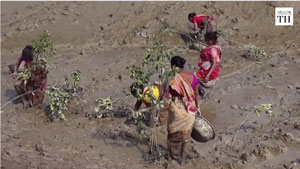
GLOBAL Funding to restore mangrove forests is money well spent, according to a new meta-analysis by ecological economists. For every dollar spent to restore mangroves, the ecosystem will yield $6.83 to $10.50 in returns over the next 20 years. The range reflects different economic projections of how much immediate costs are worth compared to future benefits and reflects the significant ecological benefits that degraded habitats receive from mangrove restoration. “The most important point is that now, in the face of the post-2020 framework and the U.N. Decade on Ecosystem Restoration, we can see that yes, there are real ecological benefits and economic value in restoring mangroves,” said Associate Professor Alexandros Gasparatos from the Institute for Future Initiatives at the University of Tokyo. READ MORE AFRICA Away from the world, the mangrove fishers of DR Congo
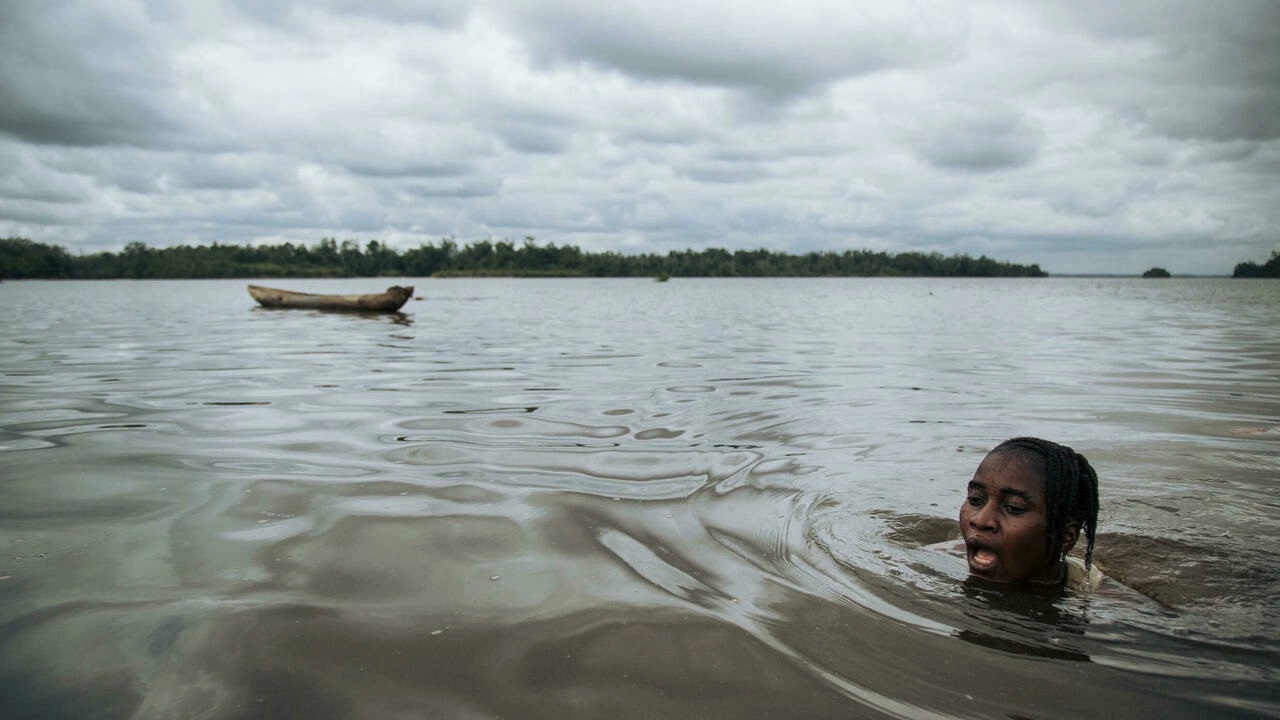
DRC – Buried in mud several metres (around 10 feet) below the surface is their prize: Clams known as bibwati, which are both a delicacy and a lifeline. The 768-square-kilometre (296-square-mile) park is a rare jewel of conservation in a world where mangroves are routinely destroyed for tourism or seafood farms. It lies on the mouth of the mighty Congo, where unique species of trees and shellfish thrive in the confluence of fresh and salt water. The men and women divers are members of the Assolongo tribe — the only community authorised to live in the Democratic Republic Congo’s Mangroves National Park. The villagers hand-fish for bibwati and — almost literally — live on them. The clams are boiled and their flesh taken for food. The shells are then thrown onto the river bank, joining a pile of remains that become the foundations for homes. “Our grandparents built their huts several dozen metres (yards) from where we are today,” said Nzabi. READ MORE AMERICAS Still Time to Order Your Children’s Art Calendars 2022
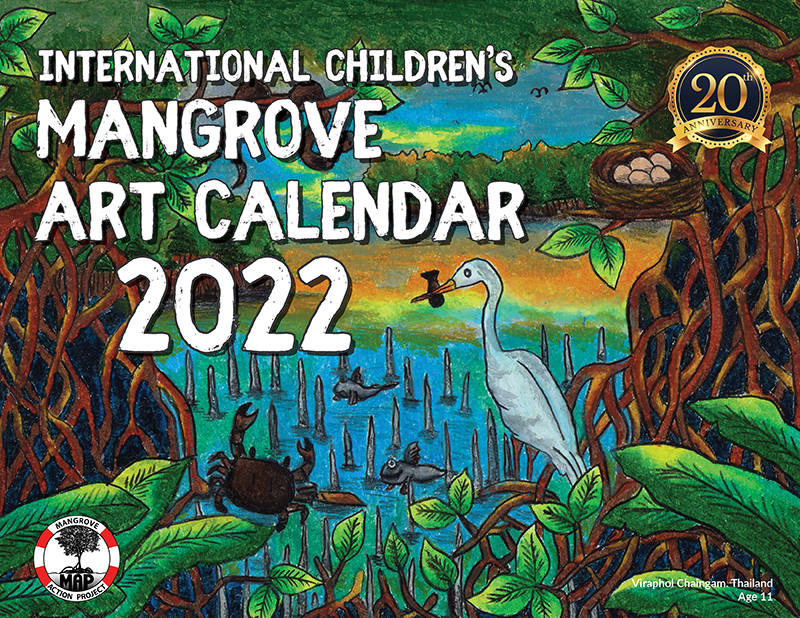
MAP’s International Children’s Art Calendars 2022 are here and ready to order! With beautiful artwork submitted by students from many countries around the world, these calendars both make a great gift, and are a helpful reminder for what we can do to assist in saving our world’s mangroves. All proceeds will go towards furthering MAP’s mission of conserving, restoring, and protecting the world’s invaluable mangrove forests. We wish to thank every child, their teachers and associate non-governmental organizations that participated and collaborated in MAP’s 20th anniversary International Children’s Mangrove Art Contest during 2021. For two decades, MAP’s art contest has been inspiring and creating awareness as well as giving the youths the opportunity to voice and express their point of view on mangrove forests and the problems mangroves face today. We are thrilled to see interest for mangroves continuing to grow among youths, inspiring creative art and learning through participation. Through the art contest, young artists discover the incredible beauty, importance, and biodiversity of mangrove forests, depicting through their art what they have experienced via mangrove field trips, or in the classroom, and home studies. ORDER HERE Mangrove seedlings collected by Cape Coral man help preserve Hemp Key
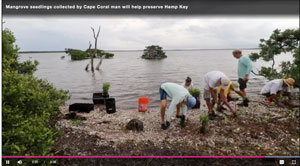
USA – Using satellite images from Google Earth, you can see what Hemp Key in Pine Island Sound looked like back in 1999, a lush island full of mangroves. But, things look much different today, and that’s all thanks to Hurricane Charley. Now there are not nearly as many mangroves as there were before, and with no protection, the island shrank to about half the size it once was. That’s a problem since the island is a vital bird sanctuary. Ben Giddins of Cape Coral, started collecting mangrove seeds from the city’s canals months ago. For six months, he’s been growing the seedlings and preparing for them to be planted where they can make a difference. When he offered them to SCCF (Sanibel-Captiva Conservation Foundation) for planting, they said Hemp Key was the perfect spot. “Most of these Mangrove Propagules were rescued from boat ramps and concrete canals where they weren’t going to grow,” Giddins said. “So we rescued them to give them a chance, and today we are planting them.” READ MORE South Florida brothers team up to restore world’s lost mangroves

USA – For over 100 years as South Florida’s coastline was developed, acres upon acres of mangroves were destroyed in the process. In recent years we’ve begun to understand just how vital mangroves are to protecting our shores and cleaning up our waterways. Two Palm Beach County brothers recognized that and launched a company with the goal of restoring the world’s lost mangroves. They’re doing it by selling hats and shirts, changing the world by planting one mangrove at a time. “We are putting back what was once here and we are using natural elements to stabilize eroding shorelines,” said Peter Dewitt, program manager for the Bureau of Land Management of the Jupiter Inlet outstanding natural area. READ MORE ASIA G20 Bali Summit to emphasize importance of mangrove restoration
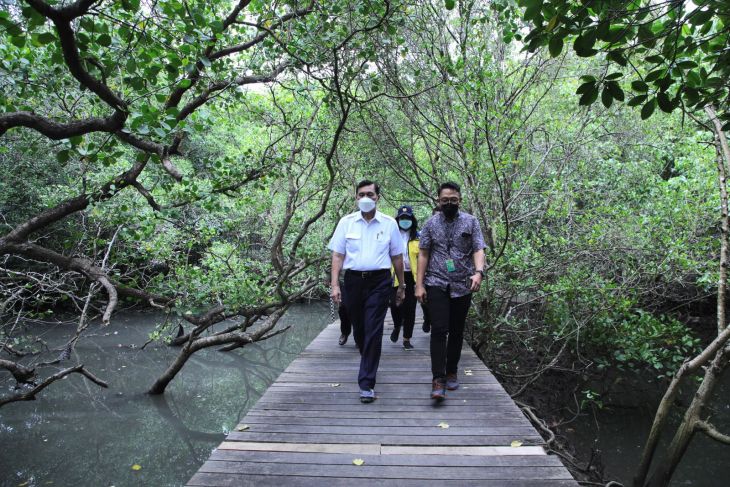
INDONESIA – The G20 Summit in Bali in 2022 will emphasize the importance of the Indonesian government’s mangrove restoration program, Coordinating Minister for Maritime Affairs and Investment, Luhut Binsar Pandjaitan, has said. “President Joko Widodo will convey a message to world leaders about the importance of mangrove restoration in generating carbon credits (at the summit),” Pandjaitan remarked while inspecting mangrove plantation sites in Bali on Thursday. The program has received funding of US$1.2 billion, he said in a written statement in Jakarta on Friday. Countries and world leaders in the forum must take concrete action on mangrove restoration, he added. Currently, the government is running a mangrove restoration program in an area of 600 thousand hectares and mangrove planting in Bali is part of the mangrove restoration program, the minister said. READ MORE Indonesia slashes 2021 mangrove restoration target, vows to make up in 2022

INDONESIA – Indonesia has revised down its 2021 target for rehabilitating mangroves in light of “technical hurdles” brought about by the COVID-19 pandemic and other factors, according to the nation’s mangrove restoration agency. The new target is 33,000 hectares (81,500 acres), down from 83,000 hectares (205,000 acres), according to Hartono Prawiraatmadja, the head of the Peatland and Mangrove Restoration Agency. The larger plan to rehabilitate 630,000 hectares (1.55 million acres) by 2024 remains unchanged, he said. In 2022, “the technical hurdles that we encountered in 2021 will no longer be there,” Hartono told journalists during a virtual press conference in October. Indonesia is home to more than a quarter of the world’s mangroves — gnarled trees and shrubs that grow in sheltered, tropical coasts, where they buffer coastal communities against storm surges, tsunamis and sea-level rise, and bolster local livelihoods. READ MORE Less freshwater inflow into Persian Gulf threats mangrove forests
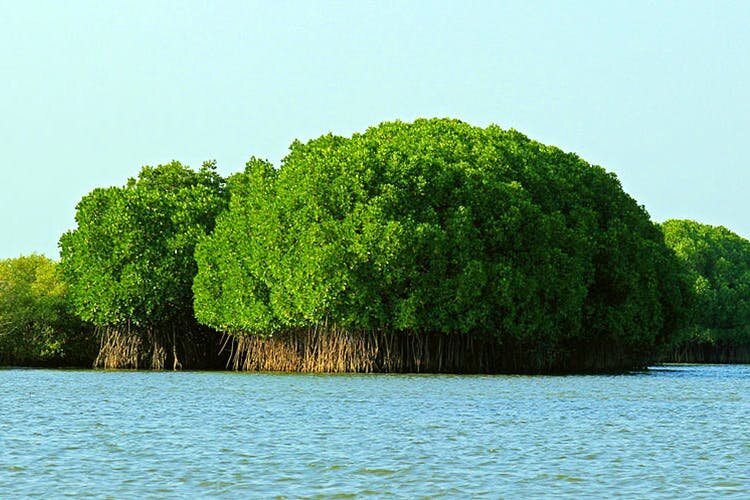
IRAN – Mangrove forests grow where the freshwater of the river enters the saltwater of the sea, which creates a unique ecosystem, however, dam construction and agricultural development reduced the inflow of freshwater leading to the destruction of the mangroves. Experts believe that, of course, Iran’s drought and the lack of rainfall in the last two decades have paced up the depletion, and all these issues together endangered the lives of these valuable trees. Southern Iran is one of the most important habitats of these plant species, covered by 22,000 hectares of these forests. Earlier in October, Qasem Taqizadeh, deputy minister of energy for water and wastewater said that Iran’s renewable water resources have decreased from 130 billion cubic meters to about 102 billion cubic meters in less than 30 years, showing a 22 percent decline. If the current trend continues, the country will lose five billion cubic meters of renewable water resources annually, which means that the water resources will be halved by the next 10 years, he added. Over the past water year (September 2020- September 2021), the country was 37 percent short of rain compared to the long average in the last 52 years; and water in the reservoirs of 199 national dams has reached a minimum, decreased by about 30 percent. These statistics show that the country’s water resources are not in good condition and need support. Researchers believe that the spread of drought is slow, but its effects may last for years. READ MORE The women saving the Sunderbans
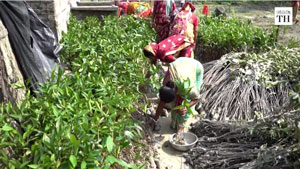
BANGLADESH – Sunderbans, the world’s largest mangrove forest, is regularly battered by intense monsoon storms. With India facing ever more powerful cyclones and extreme weather, women from the Sunderbans have taken up the task of protecting their coastal communities. They are planting thousands of saplings to help buffer coastal communities from the cyclones that course through the area. The women first rear the saplings at fresh water nurseries set up near their homes. It takes around 45 days for the saplings to become strong enough to then be replanted in nearby rivers beds for another 15 to 20 days. Once the saplings are strong, they are transplanted on to the banks to build the green embankments. The entire process takes around two to three months. The mangrove takes about three to four years to grow into a tree. This entire project is backed by a local non-profit and the West Bengal government. READ MORE Indonesia’s batik-makers turn to mangroves as demand grows for eco-dyes
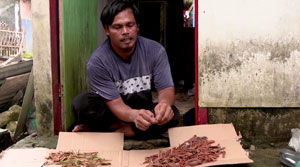
INDONESIA – In a quiet mangrove forest in central Indonesia, a man moves gingerly across vegetation distinguished by its big, wooden stilt roots, searching for fallen mangrove fruits that rest on leaves or float on the water. Gathering a handful of what looks like string beans, the man, a batik craftsman, heads home to make natural dye from them.For the past four years, Sodikin, 48, and his group of batik makers have shifted from using chemical materials for colouring to mangrove-based products, cutting costs and helping the environment. “We use natural materials so as to preserve the mangrove forest at the same time,” Sodikin, who uses only one name, told Reuters as he processed dried fruits before boiling them to extract colour. “We do not cut down the trees and we only take fruits or leaves that have fallen.” Batik is a traditional Indonesian dying used in patterns and drawings, typically on fabric and finished textiles. READ MORE Like this newsletter?
Pease consider donating to MAP to keep it going.
Giving could never be easier  | ACTION ALERTS BHP: Stop the Greenwash
There is no such thing as ‘green mining’. SIGN OUR PETITION Strengthen 60 Women Farmers in El Salvador
DONATE HERE Stop the East African Pipeline that threatens the planet #STOPEACOP – CLICK HERE Stop construction work on a private port In Defense of the Quilombo Boca Do Rio TAKE ACTION! Tell Sumitomo to stop building polluting coal power in Bangladesh! TAKE ACTION!
Like this newsletter? Pease consider donating to MAP to keep it going. Giving could never be easier 
MAP Website en Español
haga clic aqui
PRINTING EARLY NOV
ORDER YOUR 2022 MAP CHILDREN’S ART CALENDER HERE
TO RECEIVE BEFORE JAN 1
 13 Year old Linda Li “Mangrove Adventure” from Kid Dream Art School
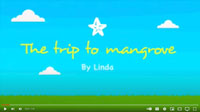
WATCH NOW 
Restoring The Natural Mangrove Forest
Watch movie

Community Based Ecological Mangrove Restoration in Rufiji Delta VIEW VIDEO
Video: Mangroves for the Future
View Here WANT TO GET INVOLVED?
Follow and Join MAP!    
Like this newsletter? Pease consider donating to MAP to keep it going. Giving could never be easier 

Interested in connecting or working with MAP? Check out our opportunities here 
MANGROVE ISSUES Want to learn more about mangroves?
Our short presentation will give you a better understanding of the issues we are working to solve. WATCH PRESENTATION What is CBEMR? Download MAP’s 2 page CBEMR Information Sheet containing links to all MAP’s CBEMR resources – CLICK HERE View MAP’s uploaded Videos at
MAP Video Gallery Question Your Shrimp Consumer/Markets Campaign!
WATCH VIDEO Mangroves: Guidebook to Malaysia – Click Here SHARE MAP’S VISION
CLICK HERE to watch short introductory video. Together we can work “at the roots of the sea”. Our short documentary, Reducing the Risk of Disaster through Nature-Based Solutions : Mangroves 
Marvellous Mangroves Curriculum The Marvellous Mangroves Curriculum begins with a simple philosophy – getting future generations to not only learn about, but understand the importance of mangrove forests. VISIT 
The award-winning Marvellous Mangroves (MM) curriculum educates children on the importance of mangroves and their ecological functions, teaching them about modern challenges and mechanisms for sustainability. VIEW VIDEO Marvellous Mangroves Curriculum in Bangladesh – WATCH VIDEO
MARVELLOUS MANGROVES IN BRAZIL
En Portuges 
Marvellous Mangroves – A Curriculum-Based Teachers Guide.
Like this newsletter? Pease consider donating to MAP to keep it going. Giving could never be easier 
“Question Your Shrimp” Campaign Question Your Shrimp – is it really sustainable? Sign the Petition
Note to Our Readers: We strive to keep active links in our newsletter. However, due to circumstances beyond our control, occasionally links to stories may become broken. If you find a link to a story is not functioning, please cut and paste the headline into your browser search bar. In most cases you should be able to locate the original story.
Not yet a MAP News subscriber?
Click here to subscribe. 
|

























